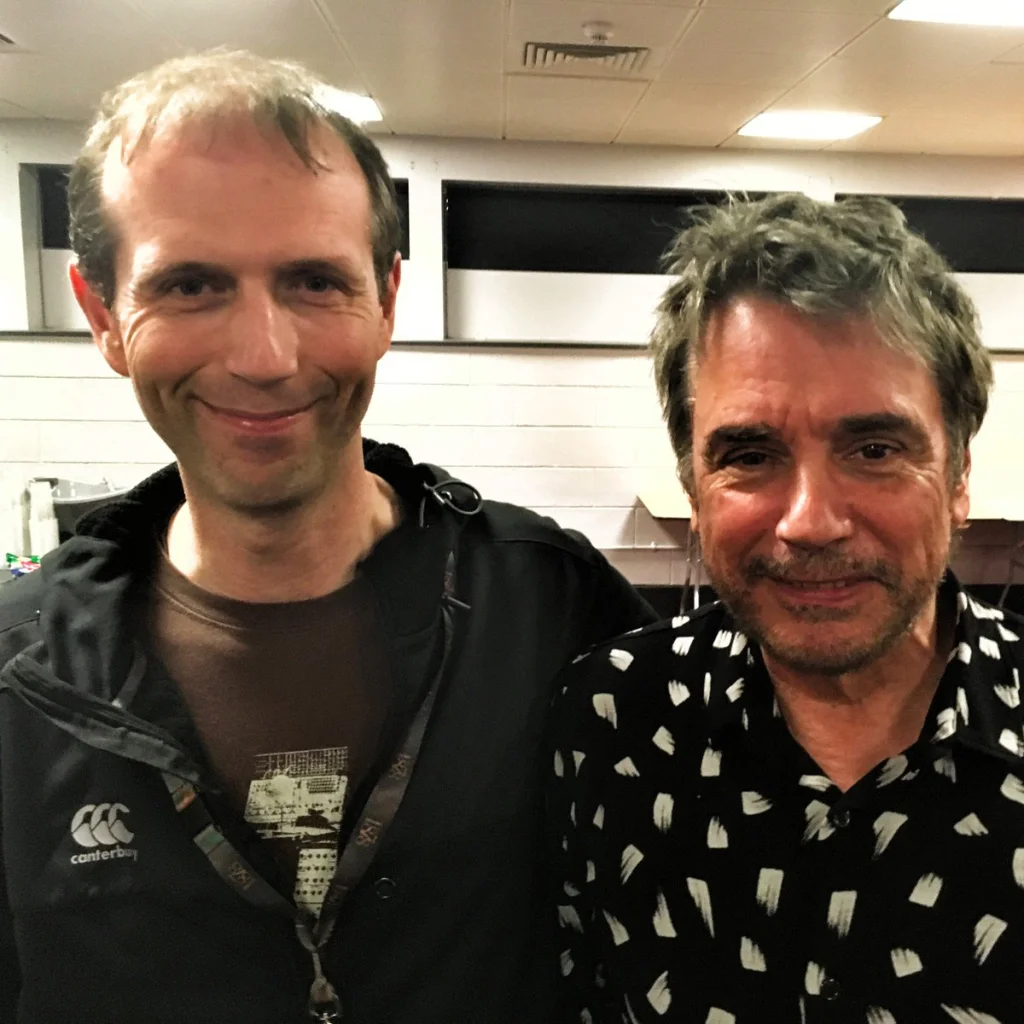Category: Music
-

How Jean-Michel Jarre has reflected France and the world through his music over multiple generations
Who is JMJ? In 1948, French electronic musician Jean-Michel Jarre was born in Lyon. His mother, France Pejot, was a Lyonnaise resistance fighter and concentration camp survivor, and his father, Maurice Jarre, was a composer of film music (including the soundtracks to David Lean’s “Lawrence of Arabia” and “Doctor Zhivago”).…
-
Jean-Michel Jarre performs Oxygene live in Dublin, 18th March 2008
I went to see Jean-Michel Jarre perform his first live concert in Dublin at the National Concert Hall (NCH) in Dublin tonight. It was great to see him at last, as I’ve been a fan of Jarre’s ever since I first heard Oxygene 4 on the radio / TV as…
-
Inbox crises / JMJ / i102-104 tests
Inbox crises After clearing another few hundred e-mails out of my inbox on the plane to London yesterday, and realising that Thunderbird’s tagging of messages wasn’t really doing anything useful for me, I’ve now created five subfolders of my inbox with various levels of priority. I hope this works better,…
-
Enya receives honorary doctorate from the National University of Ireland, Galway
Eithne Ní Bhraonáin (Enya) was among six recipients of honorary doctorates from the National University of Ireland, Galway at a ceremony held at noon today. The other recipients were Irish traditional music archivist Nicholas Carolan, Reuters chairman Niall FitzGerald, South Africa chief justice Pius Langa, Galway-based composer Jane O’Leary, and…
-
Lackluster's Lax EP – "an emotive slice of layered sounds & soothing electronics"
I’ve been listening to music from the new Lax EP by wonderful artist Esa Ruoho, also known as Lackluster. It is highly recommended and available to download from: digilog.gr (net)label | diginet002 Here’s a blurb from their site: Finnish born and bred electronic music composer Esa Ruoho, better known as…
-
"Website is curbed in Oxegen row", Evening Herald, 26th July 2006
LEGAL THREAT: MCD stung by criticism Website is curbed in Oxegen row Evening Herald, 26th July 2006 by Mark Hilliard MCD has sent a solicitor’s letter to a popular website after several users criticised conditions at the Oxegen music festival. Concert goers had flooded the site with numerous allegations relating…
-
Ambient Zone Podcasts
I’ve created a podcasts section on my Ambient Zone site. I hope to add many podcasts there from the electronica show on Galway’s Flirt FM. As I don’t know yet how to make the site “podsafe”, I’ve decided to try and only use freely-available music (i.e. royalty free) on shows…
-
Tomita Music on Playstation 2 Advert
I was happily fiddling around connecting up some telephone wires in the hallway when I heard some music I recognised being played on TV in the living room. It was by one of my favourite musicians Isao Tomita and was his interpretation of Debussy’s Clair De Lune, from the album…